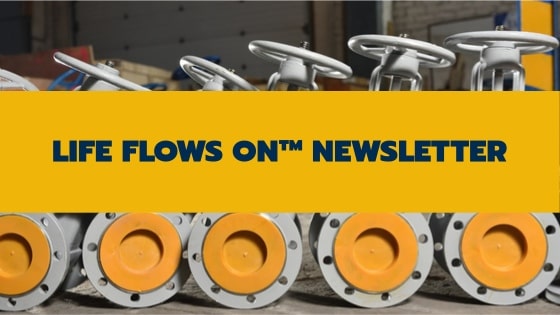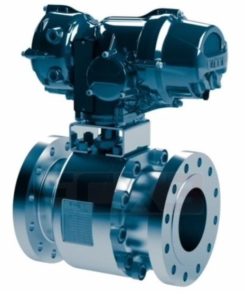
What is Valve Automation and How Does It Work?

Today, industrial facility owner-operators must do more with fewer resources. Automated valve actuation is one solution that can help you to increase productivity.
A growing number of facility managers and owner-operators are finding that valve automation is a worthwhile investment. The feature helps them to overcome challenges that are common in mass production.
An automation valve encompasses the latest technologies for valve actuation. It enables operators to take advantage of features such as electrically powered valves and remote monitoring.
Valve automation decreases the cost of ownership while increasing efficiency and operator safety. It also makes it easier for organizations to remain and environmental compliance.
To learn more about valve automation and how it works, keep reading.
What Is Valve Automation?
A valve actuator is a device used to facilitate valve automation. You might power an actuator valve with electricity, compressed air, or pressurized oil. There are two primary kinds of valve actuators – rotary and linear.
The actuator that works well for your application may vary depending on various factors, including available power sources in the operating environment.
The valve type that you choose will also vary depending on the operational functions and characteristics that you need. For example, you may need a failsafe for your application.
When choosing an automated valve, there are also minute details that can make a big difference. For example, you may need an automated valve with a specific cycle of life. The cycle life is the short amount of time that the valve remains active.
In rarer instances, you may need a valve with a specific duty cycle. The duty cycle is the number of charges and discharges that the valve can provide until it ceases to function.
The speed of actuation may also contribute to your valve selection. You might also need an automated valve that you can override manually.
Understanding Actuator Types
More than likely, you’re familiar with a manually actuated ball valve. You might open or close the valve using a lever, wheel, or gear.
A manual valve is not automated. Nevertheless, it’s a convenient, cost-effective choice for many applications.
However, a manual valve is limited. For example, you cannot shut a manual valve down immediately in the event of an emergency.
An electric actuator is one type of automated valve. Managers and operators commonly deploy this kind of valve in industrial settings. They choose this type of valve because it’s reliable.
An electric actuator can open or close a large valve in a small amount of time. You can operate one, for instance, using a single or three-phase electrical motor. The motor will then turn the combination of gears and spurs required to open and close the valve.
However, electricity is not readily available for every application. In this instance, you might make use of a pneumatic or hydraulic valve actuator. This kind of actuator works well for straightforward applications.
Some hydraulic actuators may only deliver a few inch-pounds of torque. Others, however, may provide well over one million inch-pounds of torque.
Many pneumatic and hydraulic actuators use a cylinder to support the motion for the quarter turns of the valve. In an emergency, this kind of valve is easy to shut off using an opposing spring placement.
Other pneumatic and hydraulic actuators use a multi-turn system. They work similarly to quarter-turn automation valves. However, the cylinder must turn multiple times to open and close the valve.
The Case for Valve Automation
As its name implies, you’d operate a manual ball valve manually. It’s a cost-effective and functional option for many applications.
However, some valves are so large that they would prove impossible to operate manually. In other instances, you may need an actuator valve that you can use in a remote location or a dangerous environment. These kinds of applications or ideally suited for valve automation.
You might power a pneumatic valve using air or another gas. A pneumatic valve requires minimal maintenance and works well in extreme temperatures.
However, a hydraulic actuator can produce a greater amount of force compared to a pneumatic device. In some instances, you can use the fluid from your process to operate the actuator.
Meanwhile, an electric actuator is ideal for precision applications. With electric actuation, you can adjust electrical energy to manipulate the torque of the valve. An electric actuator valve is also quiet, energy-efficient, and non-toxic.
Choosing an Actuator Valve
There are many variables to consider when choosing an actuator valve. It helps to begin by considering available power sources. If you believe that pneumatic or hydraulic actuators may meet your needs, bear in mind that you will need between a 40- and 120 psi system to operate the valve.
Alternatively, you might consider an electrically powered valve. In this instance, you’d need at least a 110V AC power source.
It’s also important to think about the environmental conditions of your application. A pneumatic or hydraulic actuator typically works well in temperatures ranging from minus 4-degrees to 150-degrees.
Meanwhile, an electric actuator can operate in environments from minus 40-degrees to 150-degrees. However, you can coax the same performance from a pneumatic or hydraulic system fitted with special seals and bearings. No matter your resources or specifications, there is a perfect automated valve for your application.
A Reliable Supplier for Your Industrial Equipment Needs
Anything Flows is the premier source for industrial actuators. Our Houston-based firm takes pride in providing high-quality industrial equipment for organizations around the world. We offer a full suite of engineering, distribution, and logistics services for industrial applications.
Whether you’re interested in valve automation or you want to refit or upgrade a facility, you can rely on AnythingFlows to deliver an effective off-the-shelf or custom solution for your industrial equipment requirements.
Feel free to contact one of our industrial supply experts to discuss your sourcing needs.
